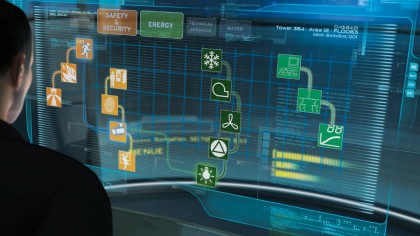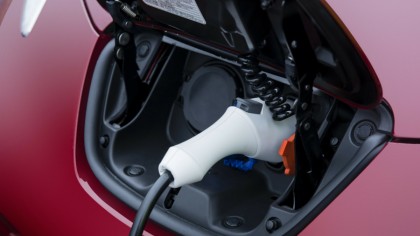The smart grid and how it will save the planet
Bringing digital mastery to critical infrastructure
Good news for renewables?
The smart grid is great news for renewables primarily because clean energy will become much more visible in the energy mix. "In the renewables sector, the smart grid allows the owners of clean energy systems like solar PV or wind to maximise their ability for self-generation, keeping the energy they generate and using it all themselves," says Huggett, whose immerSUN power diverter safely sends excess self-generated power to appliances and heating within the home rather than exporting it back to the grid. "In many cases this has enabled people to achieve 100% energy self-sufficiency."

There's other new tech at play, too. The Flow domestic gas boiler generates electricity while it heats a home through micro-CHP technology. It's a clever tech that's now hitting homes, converting natural gas into both electricity and heat in a single process that could also reduce a household's energy bill by 25%.
Is the roll-out of smart meters going smoothly?
Not particularly – the roll-out of smart meters will not be finished by the target year of 2020. A report in March by the House of Commons Energy and Climate Change Committee highlighted problems with technical specifications of meters, delays in the government appointed communications infrastructure company, and compatibility problems between different suppliers and different meters.
However, smart meters are now installed in 1.5 million homes in the UK. "This is only a fraction of the 53 million that the government aims to roll out by 2020, but we have seen an increasing push from energy suppliers so this is likely to grow rapidly," says Barker. "The roll-out has been a little bumpy, with widely reported billing errors for the first installs, but this is likely to improve as the technology is developed."

What is the technology behind them?
Smart meters can measure energy consumption in 30-minute periods. "The device is capable of remotely communicating the information with the (government-appointed) Data and Communications Company using a radio network without using local Wi-Fi," says Barker. "The smart meter is capable of wirelessly communicating with an in-home display using Zigbee wireless communications, displaying the consumption information in points and pence to help consumers save energy." Energy suppliers get an accurate meter reading without anyone having to visit the premises to take a reading ever again.
Are smart grids safe from hackers?
The grids we have now are simple, isolated and safe systems where energy flows one way. Could introducing communications to create smart grids lacking in authentication or encryption invite potentially devastating cyber-attacks?
"Wherever you take previously isolated, analogue infrastructure and plug it into a massive, interconnected digital network, you create attack vectors," says Dr Klaus Kursawe of the European Network for Cyber Security (ENCS), a not-for-profit that focuses on cybersecurity for critical infrastructure. However, he points out that the industry is taking steps to improve security, and smart grids aren't being left wide open.
Sign up to the TechRadar Pro newsletter to get all the top news, opinion, features and guidance your business needs to succeed!
It's also a question of scale. "If a nation state decided to hack into the smart grid and shut it down, the attack could theoretically be devastating," says Kursawe. "But the majority of hacks we've seen so far in this area are semi-professionals compromising smart meters, motivated by electricity theft, where the danger is to profit margins rather than infrastructure."

Recent research by YouGov, commissioned by cloud computing company Redcentric, revealed that almost a quarter of UK adults who don't currently own a smart heating system like Hive or Nest would be interested in buying one in the future.
However, the smart grid is about a lot more than checking apps and watching how much power your kettle uses. A report from Ernst and Young, commissioned by SmartGridGB, found that routine upgrades to the distribution grid using conventional technologies between now and 2050 would cost £46 billion. Upgrading with smart technologies is predicted to cost just half that. The smart grid may be big money, but it's also smart money.
Jamie is a freelance tech, travel and space journalist based in the UK. He’s been writing regularly for Techradar since it was launched in 2008 and also writes regularly for Forbes, The Telegraph, the South China Morning Post, Sky & Telescope and the Sky At Night magazine as well as other Future titles T3, Digital Camera World, All About Space and Space.com. He also edits two of his own websites, TravGear.com and WhenIsTheNextEclipse.com that reflect his obsession with travel gear and solar eclipse travel. He is the author of A Stargazing Program For Beginners (Springer, 2015),
